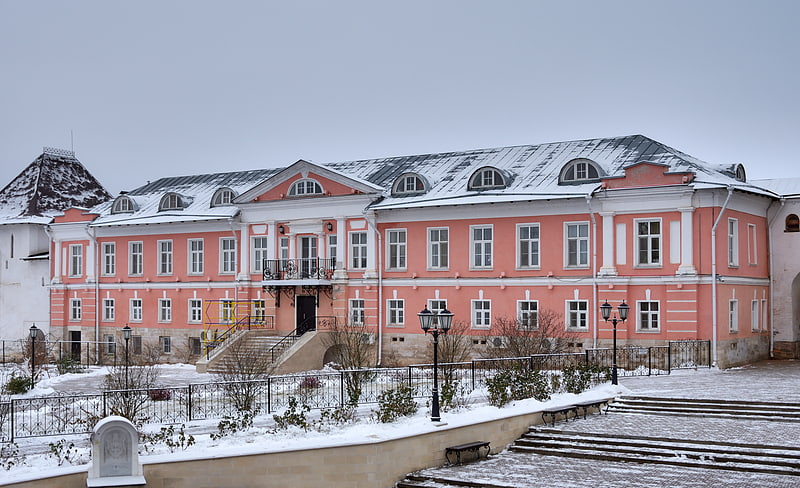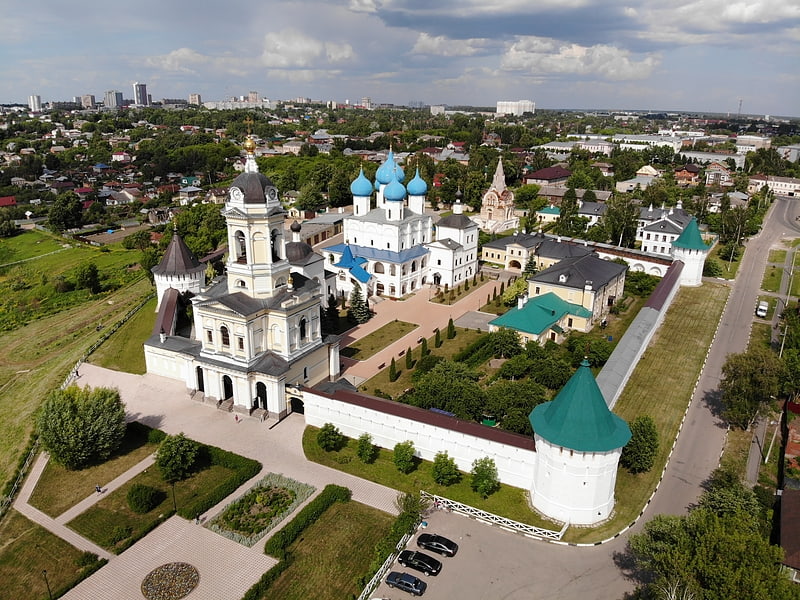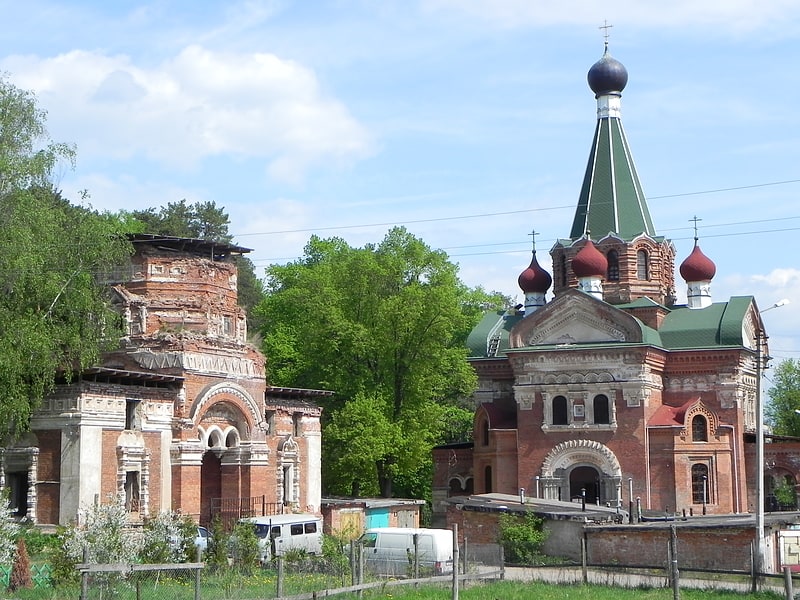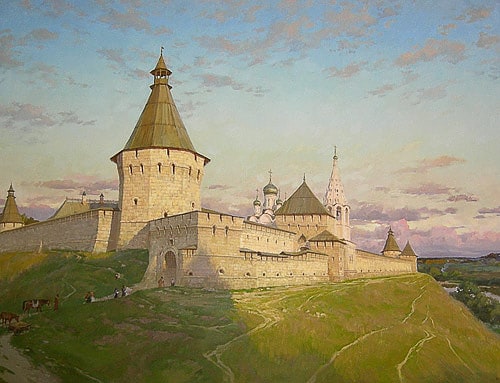Discover 5 hidden attractions, cool sights, and unusual things to do in Serpukhov (Russia). Don't miss out on these must-see attractions: Vladychny Convent, Vysotsky Monastery, and Church of Our Savior Not Made by Hands in Serpukhov. Also, be sure to include Serpukhov Kremlin in your itinerary.
Below, you can find the list of the most amazing places you should visit in Serpukhov (Moskva).
Table of Contents
Vladychny Convent

Vladychny Monastery is a Russian Orthodox convent in Serpukhov, Moscow Oblast. It is located outside the downtown, near the confluence of the rivers Nara and Oka.[1]
Address: Oktyabrskaya St., 40, 142210 Serpukhov
Vysotsky Monastery

Also known as: Высоцкий монастырь
Monastery in Serpukhov, Russia. Vysotsky Monastery is a walled Russian Orthodox monastery commanding the high left bank of the Nara River in Serpukhov, about 2 km from its confluence with the Oka. Its name stems from the Russian word for "heights".
The monastery was founded in the 1370s by Vladimir the Bold and long served as a border fortress defending the southern approaches to Moscow from the Tatars. The first hegumen, Afanasy the Elder, was a disciple of St. Sergius of Radonezh, whose successor, St. Nikon of Radonezh, is believed to have been tonsured a monk in this monastery.
After the Russo–Crimean War (1571), which saw the monastery reduced to ashes, it was restored on a grander scale. The five-domed Cathedral of the Conception dates from that building campaign, financed by Ivan the Terrible. The cathedral was almost certainly preceded by a medieval limestone church of which little is known.
In the mid-17th century the monastery was fortified with stone walls and four corner towers. It rivalled the Vladychny Monastery as the most important shrine of Serpukhov and welcomed rich patrons wishing to be buried within the monastery walls. Among those buried there are Gavrila Golovkin, the Chancellor of Peter the Great, and Fyodor Soimonov, the Governor of Siberia. The Neoclassical belfry was completed in the 1840s.
The monastery celebrated its 500th anniversary with the construction of the All Saints church, designed by Roman Klein in a fashionable Neo-Byzantine style. The church was destroyed after the Russian Revolution, when the monastery was given over to the Latvian Riflemen to be used as barracks. By the end of the Soviet period the monastery had lost most of its walls and was very dilapidated.
Restoration work on one of the greatest monasteries of the Moscow region started immediately after its return to the Russian Orthodox Church in 1991. Repairs were made in the Church of the Nativity of the Theotokos, dating from the 17th century and containing an icon screen and royal doors from the 16th century. Reconstruction of the missing sections of the wall is in prospect.
The modern monastery derives its prosperity from the venerated copy of the icon of the Inexhaustible Chalice, which attracts hundreds of pilgrims from all over Russia and abroad. The icon was brought to the monastery from the Vladychny Convent (also in Serpukhov) and is said to be particularly effective in the treatment of alcoholism.[2]
Address: Kaluzhskaya St., 5/3, 142200 Serpukhov
Church of Our Savior Not Made by Hands in Serpukhov

Also known as: Храм Спаса Нерукотворного в Серпухове
The Church of The Vernicle in Serpukhov is a small church in the town of Serpukhov, Moscow Oblast, Russia.
The church was constructed between 1893 and 1896 to a Russian Revivalist design and was funded by Serpukhov's merchant Vasily Fyodorovich Astapov. The structure graces Zanarie, a town district located on the right bank of the Nara River. The architect was Roman Klein, also responsible for the building of the Pushkin Museum of Fine Arts.
The altars in the side-chapels were dedicated to the Znamenie icon of the Theotokos and to the Three Fathers of the Church (John Chrysostom, Basil the Great, and Gregory Nazianzus). The bell-tower with main gates standing separately (its upper deck was destroyed during the soviet time) makes the entrance to the cemetery; there are low houses of the parish clergy near it. Iconostasis was made of zinc and overgilded; its icons represented events of the Holy Week.
During the Soviet time the church was closed and lost its hipped roof and cupolas. It was used as a fish storehouse with a smoking-shed. Over 50 garages are built at the distance of five to six meters around the church. The interior still features tarnished vestiges of the original academic frescoes.
Archpriest Nikolay Bogolepov, who was the minister in this church, was arrested in 1925. Another priest, Nikolay Ischenko, was executed on 23 February 1931 in Moscow. Priest Panteleimon Alekseevich Saveliev (he had served in Kashira before his arrest) was executed at the Butovski range near Moscow on 21 November 1937.
In the late 1990s, the church reverted to the Russian Orthodox Church.[3]
Serpukhov Kremlin

Serpukhov Kremlin - located on the left bank of the Nara River, on Sobornaya Mountain, one of the oldest landmarks of the city. Now only the foundation and two fragments of the wall are preserved.
Church of the Intercession of the Theotokos

Church